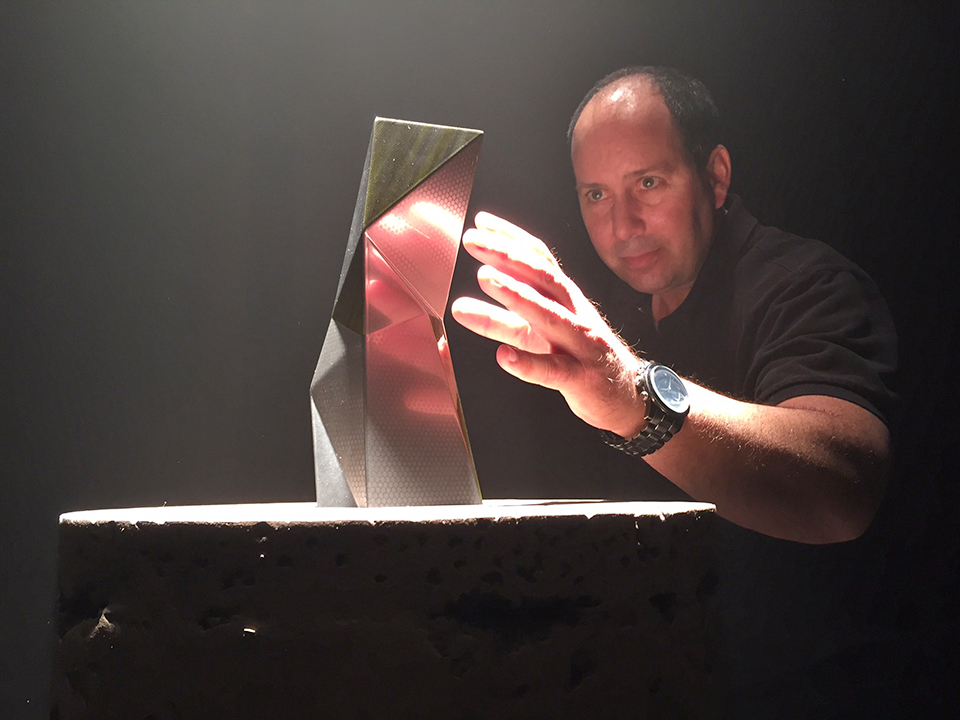Alumnus and VFX boss Mark Kolpack’s marvelous journey from the moon
One of the most exciting student films at California State University, Northridge in 1983 was a werewolf movie called It’s Not Always the Moon. It was heavily inspired by the 1981 film An American Werewolf in London and the 1980 Sci-Fi Thriller Altered States. It had a big budget for a student film, with a production value of $4,500.
“Talk spread through the department,” said Mark Kolpack ’84 (Radio, Television, Broadcasting) the filmmaker behind It’s Not Always the Moon said. “When I was done with it, and we were screening it, the entire classroom was filled with not just the entire class, but [many other people from the university] showed up.”
Today, Kolpack is still making film magic. He is the visual effects supervisor on the TV hit Marvel Agents of S.H.I.E.L.D., and for 30 years has worked as a visual effects supervisor and producer, contributing to such projects as Heroes, NCIS, Buffy the Vampire Slayer, The Wedding Planner, Blade, Batman Forever and numerous other movies, TV shows and commercials.
Kolpack said the knowledge he acquired at CSUN and the ability to create while he was a student catapulted him to bigger things in his professional career.
“I kiss the ground of the editing world I came from when doing my visual effects today because it was such an important foundation, and that’s what I got from CSUN — my foundation,” Kolpack said. “CSUN gave me the ability to create, and I felt comfortable in that environment to work with other students and felt encouraged by the staff.”
The next significant milestone in Kolpack’s career was when he got a job as post-production supervisor for the commercial production company PYTKA, where he began working for Joey Pytka — one of the most successful and well-known commercial directors of all time. Pytka also directed the movie Space Jam and music videos for Michael Jackson.
It was at PYTKA that Kolpack made the biggest transition of his professional career.
“I [saw] the tools he was using. Then I realized the post methods and said to myself, ‘I have a huge opportunity here to learn visual effects in a way that is so brand new, but still relies on the same equipment and techniques and gear that we’re currently using,” Kolpack said. “It was a lightbulb moment. It was something I didn’t plan on, but it appeared and I recognized I could be good at it and took advantage of (the opportunity).”
Since 1992, Kolpack has been supervising visual effects, including owning his own VFX company for a time. Along the way, he met and impressed influential people in the entertainment industry, including Marvel Head of TV Jeph Loeb, who was at CSUN last September to participate in the Mike Curb College of Arts, Media, and Communication’s Commerce of Creativity Distinguished Speakers Series. Loeb was the co-executive producer on Heroes.
About five years ago, Kolpack had heard of an exciting project coming up called Marvel Agents of S.H.I.E.L.D. and saw Loeb’s name attached to it He immediately got excited. His agent set up a meeting, but Kolpack knew he was an underdog to get the job. He showed up to the meeting and Loeb wasn’t there. Instead there were seven other people he had to impress.
“I was selling [on] how I was going to ensure the quality of the Marvel product,” he said. “I kind of hit them pretty hard. They probably thought I was intense.”
It worked. And Kolpack has been working on the show from the beginning. Its season four debut was on Sept. 22.
“This show is like doing a huge feature film with loads of VFX,” he said. “I’m basically working seven days a week in order to keep up. Luckily it never feels like work. It’s the largest show that I have done to date. It’s larger than Heroes season one.”
Kolpack said his team produces anywhere from 60 to 120 visual effects shots per episode. There are 80 to 100 artists working each week at three different visual effects houses in coordination with other departments such as special effects, stunts, props and video playback to make all the magic come together. He credits so many members of the team working together for their success.
“One of my CSUN professors, Sidney Salkow, who I had for my directing class as well as my Super-8 film class, often shared with us his prolific words of wisdom,” Kolpack said. “My favorite tidbit of knowledge — and one that I have stored away in my bag of tricks — is this: He said, and I quote, ‘If you walk onto a set to direct and you find yourself the smartest person on the crew, you’re in a lot of trouble. Always surround yourself with people smarter and more talented than you.’
“Never have there been truer words spoken,” he continued. “I have always hired big-brain talent to help me with my visual effects. With no hubris implied here, I’m extremely good at my craft because of following advice that he said in passing some 33 years ago.”
There’s another challenge Kolpack hopes to take on down the road. He wants to direct films. He’s eager to do it.
“All through my life I’ve been collecting little jewels that I place into my bag of tricks,” he said. “These jewels are the many things I’ve learned starting at CSUN to working on the job over the course of my career. These bits of valuable knowledge have made me better at what I do and allowed to me to grow and develop in my film career.”
In a sense, Kolpack’s journey is returning to his roots, established at CSUN.


 experience
experience